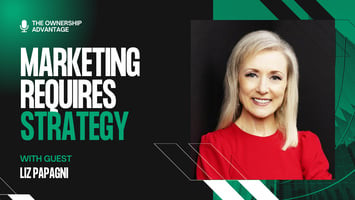Unlock Growth and Freedom Through a Proven Methodology In today’s competitive business landscape,...
Maximizing Your Business Exit: Insights on Buying and Selling in Today’s Market
Selling a business is one of the most consequential financial decisions a business owner will ever make. Whether you’re thinking about stepping away soon or just want to better understand your company’s value, the path to a strategic, profitable exit is filled with opportunity and pitfalls. In a recent episode of The Ownership Advantage, host Tanner sat down with Josh Carnes, principal and senior M&A advisor at Lion Business Brokers, to unpack what really moves the needle in business sales, what can torpedo a deal, and how today’s merger and acquisition landscape has shifted.
The Evolving Landscape of Business Sales
Carnes, with over 12 years in business exits and nearly a decade at Lion, has witnessed a dramatic shift post-COVID. “We have more buyers on the market today than we have ever seen in the past,” Carnes shares. And these aren’t just private equity firms anymore: retired executives seeking control over their income, successful real estate professionals, and even ambitious recent college grads are all hunting for their first acquisition.
Interestingly, Carnes notes the rise of the “Entrepreneurship Through Acquisition” (ETA) movement, where younger buyers are encouraged to purchase existing businesses rather than start from scratch. Despite this, the market is highly competitive—listing a quality business can result in 50-75 inquiries in just a couple of weeks. Buyers range from sophisticated investors to newcomers looking to buy themselves a well-paying job.
Defining Main Street and Middle Market
Not all businesses are created equal in the eyes of M&A advisors and lenders. Carnes clarifies, “Main Street” businesses are usually valued below $5M, generally targeting owner-operators and qualified for SBA financing. There’s a push to raise this threshold to $10M due to rising business values and inflation. Above those numbers, you move into the “lower middle market,” where individual buyers and private equity firms start to compete, and eventually, into the realm of big investment banks and IPOs.
This distinction matters significantly: the types of buyers you attract, the financing options available, and the multiples you command all hinge on your business’s size and profile.
What Drives Business Value?
The single biggest factor? Cash flow. “How much cash is an owner taking home at the end of the year?” Carnes emphasizes. “That’s what we sell businesses on.” It’s not just about raw revenue but what actually ends up in the owner’s pocket—and how sustainable that number is.
Recurring revenue models, such as maintenance contracts or subscriptions, can meaningfully increase business value. Predictability lowers risk for buyers, boosting the multiple they’re willing to pay. Other big factors include:
- Clean, well-documented financials
- An owner who isn’t essential to daily operations
- Strong management or processes
- Industry trends favoring your business model
On the flip side, if the owner is the business, or if financials are unorganized, expect valuations to drop.
The Main Deal Killers
“Probably the saddest thing I hear is, ‘I’ve been thinking about retiring, so I started letting things wind down’,” Carnes remarks. Owners who wait too long and allow their business to shrink may find its value has eroded.
Other red flags include:
- Overestimating the value, especially when recent declines aren’t factored in
- Lack of a succession plan or team to replace the owner
- Unwillingness to address financial or operational issues before sale
Carnes encourages owners to seek valuation and broker insight before deciding to sell—sometimes, small changes can add significant value, or at least set expectations correctly.
Navigating Today’s Market: Opportunities and Strategies
Despite higher interest rates, it’s a seller’s market for quality businesses—there are more buyers than prime listings, especially in hot regions like Central Texas. Carnes advises owners eyeing retirement to consider selling in the next 12–18 months for maximum interest and flexibility on terms—not just price.
For buyers, Carnes recommends targeting smaller businesses outside the $500k+ cash flow “sweet spot.” There’s less competition, and a motivated new owner can grow a $150k business into a much more valuable asset with a few years of hard work.
Ready to Take the Next Step?
If you’re considering a business sale (or purchase), the best advice is to engage experienced advisors early. “Even if it’s five years from now, reach out and ask what you could get today,” Carnes urges. That early insight can save—and make—you millions.
Whether you’re ready to sell now or just planning ahead, understanding today’s dynamic market is your best ownership advantage.
Connect with Josh HERE
Check out the full episode on YouTube HERE
Listen to the full episode on Apple Podcasts HERE


